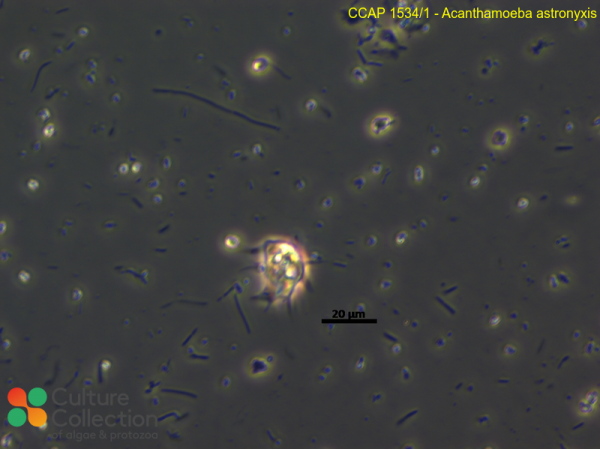References [ 16 ]
Inglis TJ, Rodrigues F, Rigby P, Norton R & Currie BJ (2004) Comparison of the susceptibilities of Burkholderia pseudomallei to meropenem and ceftazidime by conventional and intracellular methods. Antimicrobial Agents and Chemotherapy 48: 2999-3005.
Inglis TJ, Rigby P, Robertson TA, Dutton NS, Henderson M & Chang BJ (2000) Interaction between Burkholderia pseudomallei and Acanthamoeba species results in coiling phagocytosis, endamebic bacterial survival, and escape. Infection and Immunity 68: 1681-1686.
Inglis TJ, Robertson T, Woods DE, Dutton N & Chang BJ (2003) Flagellum-mediated adhesion by Burkholderia pseudomallei precedes invasion of Acanthamoeba astronyxis. Infection and Immunity 71: 2280-2282.
Howard K & Inglis TJ (2005) Disinfection of Burkholderia pseudomallei in potable water. Water Research 39: 1085-1092.
Costas M & Griffiths AJ (1984) The esterases and acid-phosphatases of Acanthamoeba (Amoebida, Acanthamoebidae). Protistologica 20(1): 33-41.
DOI: none
Costas M & Griffiths AJ (1984) Taxonomic significance of the fatty acid composition of Acanthamoeba (Amoebida, Acanthamoebidae). Protistologica 20(1): 27-31.
DOI: none
Vickerman K (1962) Patterns of cellular organisation in Limax amoebae. Experimental Cell Research 26: 467-519.
Lorenzo-Morales J, Ortega-Rivas A, Martínez E, Khoubbane M, Artigas P, Periago MV, Foronda P, Abreu-Acosta N, Valladares B & Mas-Coma S (2006) Acanthamoeba isolates belonging to T1, T2, T3, T4 and T7 genotypes from environmental samples in the Nile Delta region, Egypt. Acta Tropica 100: 63-69.
Lorenzo-Morales J, Ortega-Rivas A, Foronda P, Martínez E & Valladares B (2005) Isolation and identification of pathogenic Acanthamoeba strains in Tenerife, Canary Islands, Spain from water sources. Parasitology Research 95: 273-277.
Tsvetkova N, Schild M, Panaiotov S, Kurdova-Mintcheva R, Gottstein B, Walochnik J, Aspöck H, Lucas MS & Müller N (2004) The identification of free-living environmental isolates of amoebae from Bulgaria. Parasitology Research 92: 405-413.
Ortega-Rivas A, Lorenzo-Morales J, Martínez E, Villa M, Clavel A, Valladares B & del Castillo A (2005) A specific primer pair for the diagnosis and identification of Acanthamoeba astronyxis by random amplified polymorphic DNA-polymerase chain reaction. Journal of Parasitology 91: 122-126.
DOI: none
Khan NA, Jarroll EL, Panjwani N, Cao Z & Paget TA (2000) Proteases as markers for differentiation of pathogenic and nonpathogenic species of Acanthamoeba. Journal of Clinical Microbiology 38: 2858-2861.
DOI: none
Baquero RA, Reyes-Batlle M, Nicola GG, Martín-Navarro CM, López-Arencibia A, Esteban JG, Valladares B, Martínez-Carretero E, Pinero JE & Lorenzo-Morales J (2014) Presence of potentially pathogenic free-living amoebae strains from well water samples in Guinea-Bissau. Pathogens and Global Health 108: 206-211.
Taher EE, Méabed EMH, Abdallah I, Wahed WYA (2017) Acanthamoeba keratitis in noncompliant soft contact lenses users: Genotyping and risk factors, a study from Cairo, Egypt Journal of Infection and Public Health -: -.
Fuerst, PA (2023) The status of molecular analyses of isolates of Acanthamoeba maintained by international culture collections. Microorganisms 11(2): 295.
Fuerst PA & Booton GC (2020) Species, sequence types and alleles: Dissecting genetic variation in Acanthamoeba Pathogens 9(7): 534.













